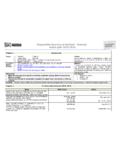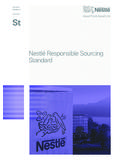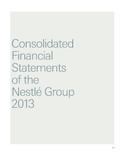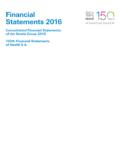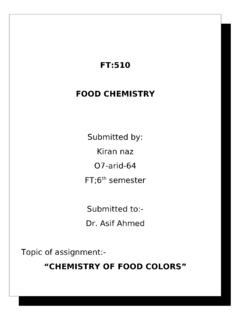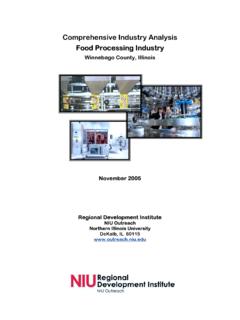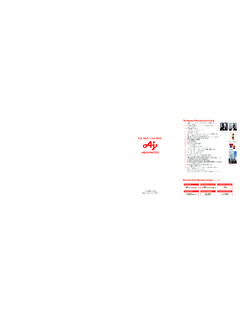Transcription of Food Fraud Prevention - Nestlé Global
1 food Fraud PreventionEconomically-motivated adulteration1 Table of contents 2 Introduction and purpose of this booklet 3 What is food Fraud 4 Why is it important to prevent food Fraud 4 Glossary of terms used in this booklet 5 food Fraud Prevention process 6 Vulnerability assessment 10 Mitigation measures 10 Raw material specifications 10 Analytical surveillance 11 Supplier relationship 13 Supplier audit 14 Supply chain transparency and simplification 16 Alert system 16 Frequently asked questions 19 Useful resources & tools23No process can guarantee that food and food supply are not the target of criminal activity.
2 The purpose of this booklet is to guide food operators through approaches and processes to improve the resilience of supply chains to food Fraud . It provides guidance on how to assure the authenticity of food by minimising vulnerability to Fraud and mitigating the consequences of food and purpose of this booklet The food industry considers the safety of its products as its main concern. Over the years, industry and regulators have developed food safety management systems, making major outbreaks of food poisoning now quite unusual in many countries.
3 These systems typically use Hazard Analysis Critical Control Point (HACCP) principles, which are accepted globally. HACCP has proven to be effective against accidental , HACCP principles have not been routinely used to detect or mitigate deliberate, fraudulent actions on a system or process. These actions include the deliberate contamination of food , or food booklet Describes a process for food Fraud Prevention and the principles of the vulnerability assessment; Outlines measures that can deter fraudsters, or give early detection of food Fraud ; Provides sources of information and intelligence that may help to identify emerging Fraud commonly encompasses a wide range of deliberate fraudulent acts.
4 The focus of this booklet however, is on one type of food Fraud the intentional and economically-motivated adulteration of foods. This is the fraudulent addition of non-authentic substances, or the removal or replacement of authentic substances without the purchaser s knowledge, for economic gain of the seller. The two main types of economi-cally-motivated adulteration are: Sale of food which is unfit and potentially harmful, such as: recycling of animal by-products back into the food chain; packing and selling of meat with unknown origin; knowingly selling goods past their use by date.
5 Deliberate mislabelling of food , such as: products substituted with a cheaper alternative, e. g. farmed salmon sold as wild, or Basmati rice adulterated with cheaper varieties; false statements about the source of ingredients, their geographic, plant or animal booklet does not address the other types of food Fraud such as counterfeiting (fraudulently passing off inferior goods as established and reputable brands), product tampering, theft, smuggling, document Fraud , and product diversions.
6 Neither does it cover food adulteration intended to cause public health harm, economic harm, or terror ( food defense issues).What is food Fraud food safetyMitigation of unintentional/accidental adulteration Science basedFood defenseMitigation of intentional adulteration Ideologically motivatedFood fraudMitigation of intentional adulteration Economically motivatedFood Safety Management System45 While it is not the intention of food Fraud to harm consumers, such acts can cause illness and even death. This was the case in 2008 when melamine was used as a nitrogen source to fraudulently increase the measured protein content of milk, resulting in more than 50 000 babies hospitalised and six deaths after having consumed contaminated infant common factor in many cases of food Fraud , is that the adulterant is neither a food safety hazard, nor readily identified (as this would defeat the aim of the fraudster).
7 Common adulterants include water and sugar, or ingredients that may be legitimately used and declared, but whose improper use constitutes Fraud . food Fraud deceives the consumers by providing them with lower quality foodstuff, against their knowledge and will. Economically-motivated adulteration deprives the consumers of the quality products they intend to purchase. It can also have serious implications on food safety and the health of consumers. The Prevention of food Fraud is paramount to protect the trust of our consumers and to maintain fair, sustainable business is it important to prevent food Fraud Economically-motivated adulteration (EMA): The intentional adulteration of foods, motivated by economic gain.
8 It is the type of Fraud covered in this booklet. Vulnerability assessment (or vulnerability characterisation): Within a food Fraud management system, the step aimed at reviewing and assessing various factors, which create vulnerabilities in a supply chain ( weak points where Fraud has greater chances to occur). Mitigation measure: Measure taken to decrease vulnerability to a certain type of adulteration in a given supply chain. Mitigation strategy: Selected set of mitigation measures aimed at preventing food Fraud in a given supply chain.
9 food operator: Organisation carrying out any of the activities related to processing, manufacture, packaging, storage, transportation, import, distribution of food , including food services and sale. Supplier: The party that is supplying materials (raw or semi-finished), food ingredients or food products to other parties ( food operators) in the value chain. Buyer: The party that is buying materials (raw or semi-finished), food ingredients or food products from of terms used in this booklet food Fraud Prevention process Like any management system, a food Fraud management system is a continuous process as depicted in the figure below (from Pharmacopeia Appendix XVII: food Fraud Mitigation Guidance).
10 It begins with an evaluation step to characterise food Fraud vulnerabilities, followed by the design and review of a mitigation strategy, and its implementation. Periodically, or as changes occur that may impact the previously identified vulnerabilities ( a newly identified adulterant for an ingredient is reported, changes in the supply chain for an ingredient), the entire process must be carried out again to ensure its continued mitigation strategyDraft of mitigation strategyDetermine if draft mitigation strategy acceptableNot acceptableVulner- abilities characteri- zationChanges impacting vulnerabilities or system in placeStartacceptableFood Fraud Management System67A general approach to prevent food Fraud can be summarised as follows: Conduct vulnerability assessment, including.
